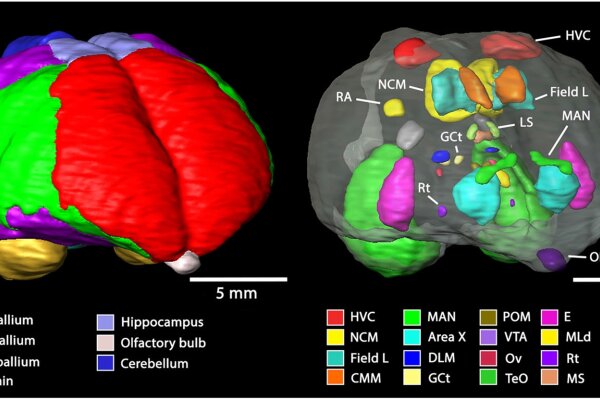2015-01-18

Because of their sophisticated vocal behaviour, their social nature, their high plasticity and their robustness, starlings have become an important model species that is widely used in studies of neuroethology of song production and perception. Since magnetic resonance imaging (MRI) represents an increasingly relevant tool for
comparative neuroscience, a 3D MRI-based atlas of the starling brain becomes essential. Using multiple imaging protocols, scientists from the University of Antwerp in Belgium, Université Rennes in France, and from the Biopsychology Department of the RUB delineated several sensory systems as well as the song control system. This starling brain atlas can easily be used to determine the stereotactic location of identified neural structures at any angle of the head. Additionally, the atlas is useful to find the optimal angle of sectioning for slice experiments, stereotactic injections and electrophysiological recordings. The starling brain atlas is freely available for the scientific community.

Because of their sophisticated vocal behaviour, their social nature, their high plasticity and their robustness, starlings have become an important model species that is widely used in studies of neuroethology of song production and perception. Since magnetic resonance imaging (MRI) represents an increasingly relevant tool for
comparative neuroscience, a 3D MRI-based atlas of the starling brain becomes essential. Using multiple imaging protocols, scientists from the University of Antwerp in Belgium, Université Rennes in France, and from the Biopsychology Department of the RUB delineated several sensory systems as well as the song control system. This starling brain atlas can easily be used to determine the stereotactic location of identified neural structures at any angle of the head. Additionally, the atlas is useful to find the optimal angle of sectioning for slice experiments, stereotactic injections and electrophysiological recordings. The starling brain atlas is freely available for the scientific community.